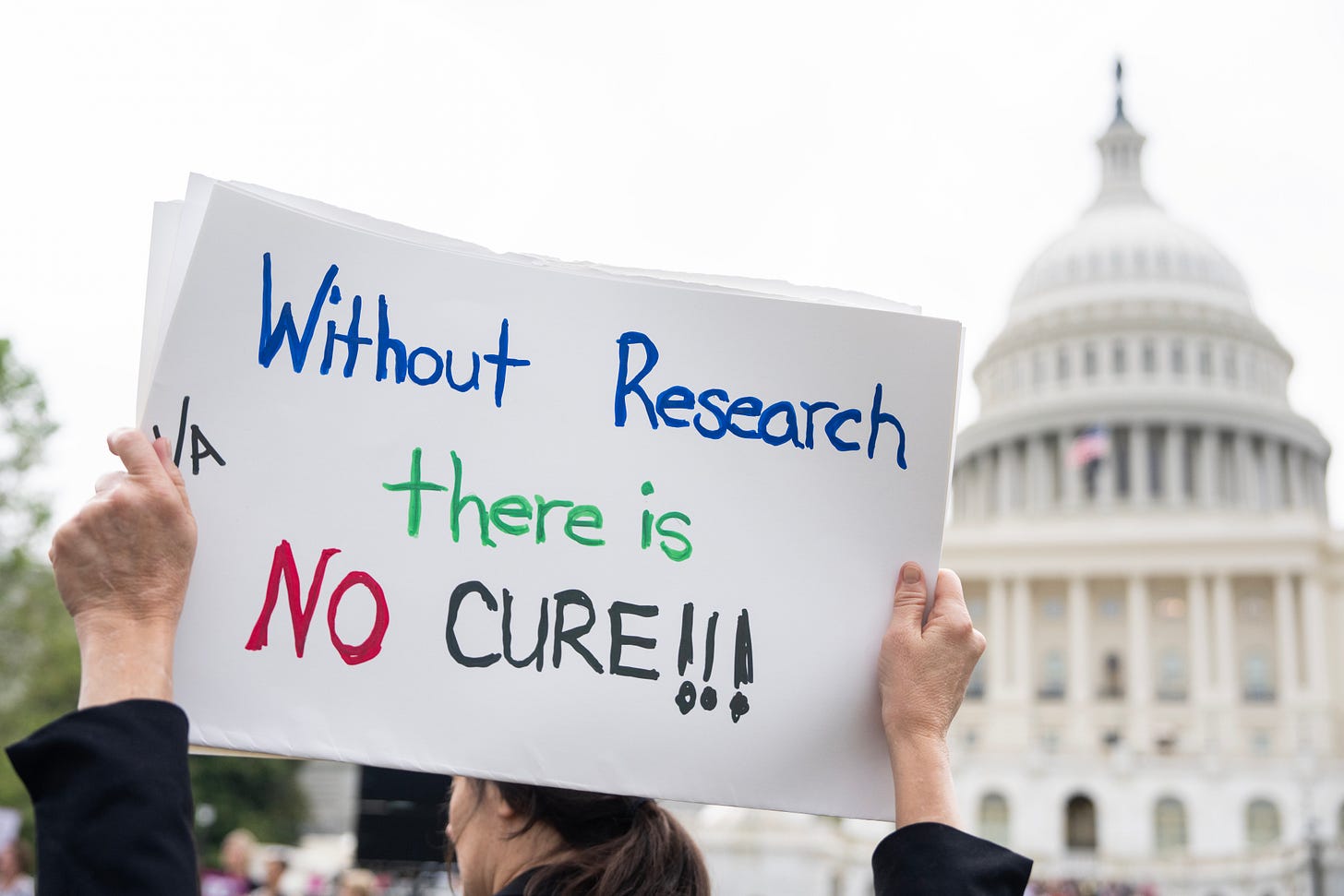Trump Wants to Cut the Kind of Cancer Research that Saved My Life
More than 600,000 Americans will die from cancer this year. Trump's cuts to medical and other scientific research will have devastating consequences for millions more.

The small federal budget for medical research, which President Donald Trump seeks to slash, looks very large once you realize it saved your life.
It saved mine.
In early November 2023, after a routine annual physical, my internist called with frightening news. I had the deadly blood cancer called acute myeloid leukemia (AML) – and no time to waste.
Pausing only to pack a bag, I went straight to the hospital. Fortunately for me, it was the Johns Hopkins University Hospital in Baltimore, Maryland.
Johns Hopkins received roughly $1 billion last year from the National Institutes of Health – more than any other university. I didn’t know if Hopkins oncologists could keep AML from killing me, but knew nowhere else could give me a better chance.
Federal investment in medical research produces discoveries and treatment innovations that the private sector cannot. For any individual company, basic research doesn’t yield enough short-term profit.
I reaped the dividends from day one.
How Federally-Funded Research Helped Save My Life
My principal oncologist, Dr. Alex Ambinder, decided I needed chemotherapy immediately. How did he know that?
Because federally-funded research had shown that chemotherapy, which scientists derived after World War I from examining the effects of mustard gas on soldiers, kills cancer cells.
Dr. Ambinder, a second-generation Hopkins leukemia specialist, prescribed an intravenous chemo cocktail called “7-3.” I received one flavor (cytarabine) for seven days, overlaid with another (idarubicin) for three days.
Why that specific combination, for that duration? Because federally-funded research published in 1981 found 7-3 the best regimen for fighting AML.
My cancer soon went into remission. When Dr. Ambinder’s father, Richard, began treating patients in the 1980s, most couldn’t expect any more than that.
But federally-funded research has since handed oncologists another powerful weapon. Beyond merely containing AML, it can cure the disease outright.
The weapon sounded so drastic I initially hesitated. Then a resident on Dr. Ambinder’s team challenged me: “Do you want to play to win?”


